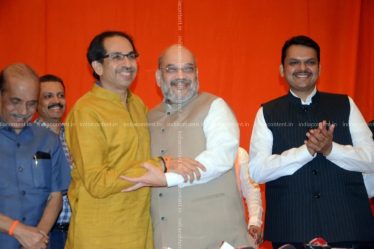
1984 Anti-Sikh Riots Timeline

The 1984 anti-Sikh riots was a series of organised killings against Sikhs in India in response to the assassination of Indira Gandhi by her Sikh bodyguards. As per the independent sources, the number of deaths happened during the time was about 8,000–17,000.
Violence continued in the early 1980s because of the armed Sikh separatist Khalistan movement which wanted independence from India. In July 1982, the Sikh political party Akali Dal’s President Harchand Singh Longowal invited Jarnail Singh Bhindranwale to take up residence in Golden Temple Complex to escape arrest. He later on made the sacred temple complex an armoury and headquarters. In the violent events which led to the Operation Blue Star since the inception of Akali Dharm Yudh Morcha, the militants killed 165 Hindus and Nirankaris, even some Sikhs who were opposed to Bhindranwale. The total number of deaths was over 400 in riots while more than 1100 people were injured.
Operation Blue Star was an Indian military operation carried out in 984 between June 1 and 8. It was ordered by the then Prime Minister, Indira Gandhi to confront Sikh separatists who took shelter in the holy shrine. Jarnail Singh Bhindranwale died and the temple complex was cleared off militants. The military action in the temple complex was criticised by Sikhs worldwide who interpreted it as an assault on Sikh religion. Four months after the operation, Indira Gandhi was shot dead by her own Sikh bodyguards— Satwant Singh and Beant Singh— at her residence on Akbar Road on October 31, 1984.

Public uproar over the death of Indira Gandhi led to the killings of several Sikhs all over India. The most-affected areas were the Sikh neighbourhoods of Delhi. According to the Human Rights Watch report in 2011, the Government of India had yet to prosecute those responsible for the mass killings.
1984 Anti-Sikh Riots History
In 1972 Punjab state elections, Akali Dal was defeated and Congress won. In 1973, Akali Dal put forward the Anandpur Sahib Resolution to demand more independence to Punjab but the Congress government rejected the demand. Bhindranwale then joined the Akali Dal to launch the Dharam Yudh Morcha in 1982 to implement the Anandpur Sahib resolution. Bhindranwale wanted “Khalistan” (a separate country) as a homeland for Sikhs. The number of people initiated into the Khalsa was increased under Bhindranwale. He and his followers started carrying firearms at all times. In 1983, to evade arrest, he along with his militant cadre occupied the Sikh shrine Akal Takht— one of five takhts of the Sikhs located in the Harmandir Sahib complex in Amritsar, Punjab.
By 1983, the situation in Punjab worsened. In October, Sikh militants stopped a bus and shot Hindu passengers, and on the same day, another group of militants killed two officials on a train. Seeing the worsening condition in Punjab, the Congress-led central government dismissed the Punjab state government and imposed the president’s rule. Before Operation Blue Star, from January 1 to June 3, 1984, over 290 people were killed in several violent incidents across Punjab. The militants killed hundreds of Hindus and Nirankaris, and even Sikhs, who were opposed to Bhindranwale
On 1 June, Operation Blue Star was launched which caused outrage among the Sikhs and increased the support for Khalistan Movement. Four months after the operation, on 31 October 1984, Indira Gandhi was assassinated in revenge by her two Sikh bodyguards. One of the assassins was fatally shot by Gandhi’s other bodyguards while the second one was convicted of the Prime Minister’s murder and then executed. It was public outcry over her death that led to the killings of Sikhs in the 1984 anti-Sikh riots.

1984 Anti-Sikh Riots Images on India Content
The India Content website has several images of 1984 Anti-Sikh Riots. The photos are available in three sizes—small, medium and large.
You can purchase various other content images from the https://www.indiacontent.in

